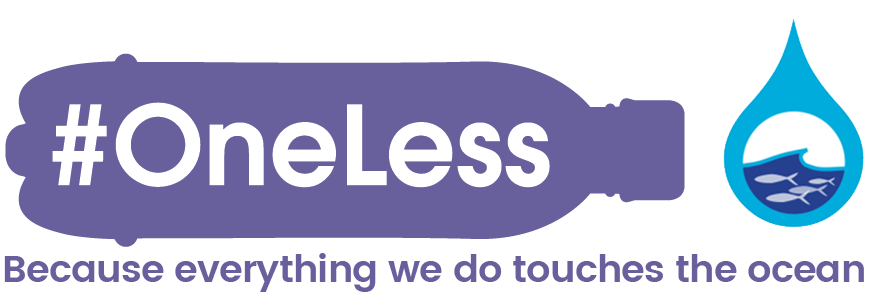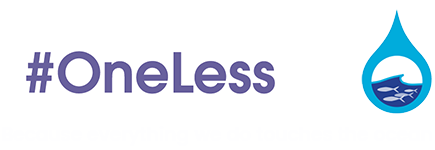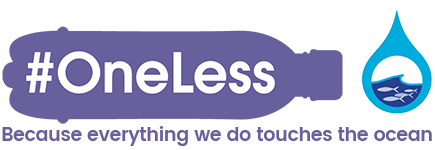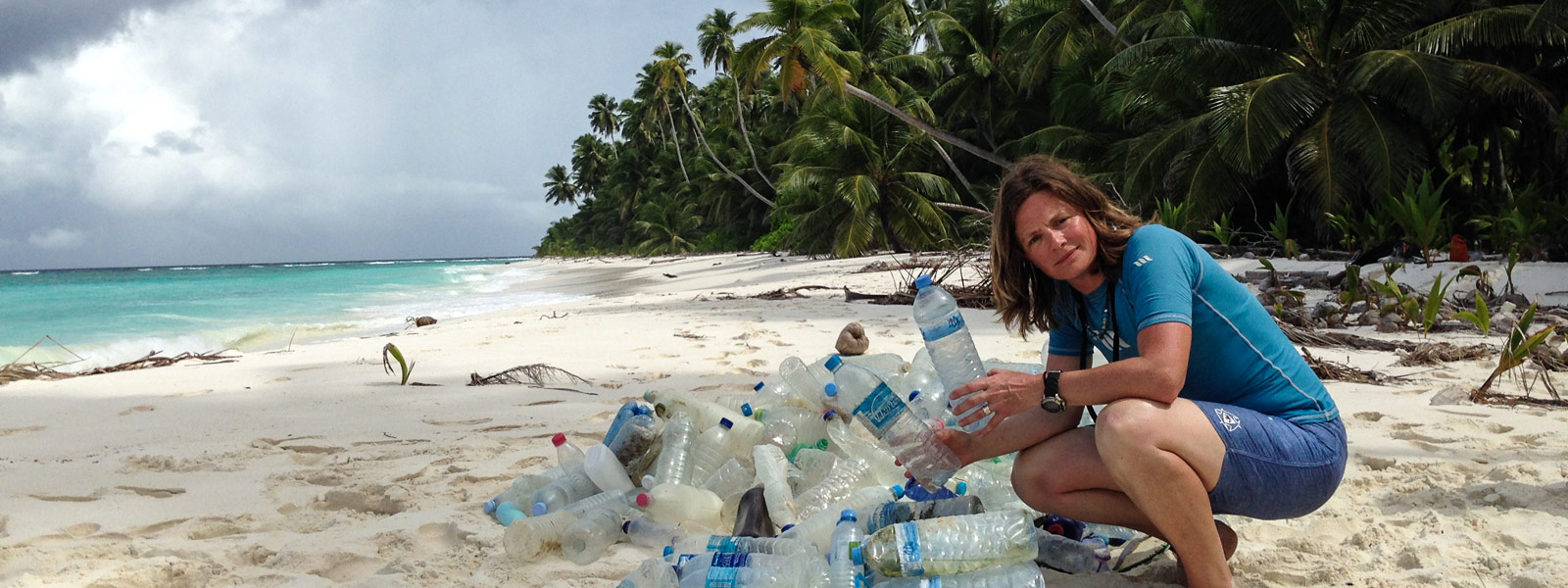Plastic pollution is a huge threat to our oceans. If nothing changes, by 2025 it is expected that there will be one tonne of plastic for every three tonnes of fish.
In her blog, ZSL head of marine and freshwater conservation programmes Dr. Heather Koldewey looks at the problem and what we can all do to help.
I’ve sailed for three whole days to one of the most isolated places on Earth to conduct a science expedition in the Chagos archipelago in the middle of the Indian Ocean. It’s the first day and we’re in a small boat crossing one of the atolls to our first dive site. I’m in paradise, surrounded by wildlife, turquoise seas, idyllic tropical islands and about to go diving.
Suddenly, I spot something in the water and am excited – could it be a pod of dolphins or a turtle coming up for air? As we get closer my heart sinks as I realise it’s a plastic water bottle, drifting gently across the ocean. As I scoop it out of the water, I realise that absolutely nowhere is safe from our disposable lifestyle. There is only one ocean, we are all connected and when we throw something away, there really is no ‘away’.
I’m fortunate to have the best job in the world. I spend time in spectacular marine environments where I get to dive, study extraordinary wildlife and work with coastal communities – ‘ocean people’. The challenges facing the ocean can seem overwhelming as I see the pace of change and paths of devastation, whether it’s shrimp trawls decimating seahorses, the current El Nino event bleaching vast swathes of coral reefs, or beaches in my home town smothered with plastic. Where do we start?
Personally, the only way I can cope with the deluge of problems in the ocean is to focus on finding solutions and take one step at a time – in our digital era best summarised by the hashtags #OceanOptimism and #OneLess!
We can stop the roughly 8 million tonnes of plastic entering the ocean each year. We ‘just’ need to rethink plastic, value it and the way we use it, and ensure it never gets into the ocean in the first place. If we care about the ocean at all, we can make a difference: connecting something as simple and symbolic as single use plastic water bottle with ocean conservation seems a logical place to start.
Why would we pay lots of money for a quick drink of water in a vessel that lasts for over 250 years that we throw away? Why don’t we just drink free, healthy water from a tap? Why would we disfigure our beaches with plastic litter?
Every piece of beach litter was in someone’s hand at one point in time. That means every one of us can help the ocean by the simple act of using a refillable bottle. Everyone can make a difference. Everyone can use #OneLess.
Arriving back in London is a stark reminder of the scale of the challenge. On a sunny day, the green spaces and streets around our hectic, diverse, beautiful capital city become choked with litter. Plastic bottles clog the Regent’s Canal that runs through the zoo.
We are ‘London-on-Sea’, a coastal city, and some of those plastic bottles are ocean bound, perhaps ending up on some else’s beach one day. But there’s a wave of change – our Project Ocean partners Selfridges – and now ZSL itself no longer sell single use plastic water bottles, providing free tap water and more ocean friendly alternatives.
So starting with each one of us, then challenging our families, friends, partners, collaborators, business contacts and others to take the #OneLess challenge, we can all make a difference for our ocean. And there is only one.







